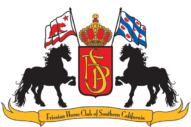
Note: This article published by Phryso.com and some rules may not apply in North America. See examples below.
Why should I go to a foal inspection?
A foal inspection is not mandatory, but you will receive an assessment and possible priming. This gives you, as a breeder, insight into the qualities, which is also useful in the event of a sale. The foals are also chipped at the inspection, in other words they receive a microchip with a unique number. A specialized ‘chip team’ is present at the inspection who chip the foals with experience.
How old does a foal have to be to be allowed to attend the inspection?
It is recommended that foals from the age of 6 weeks be submitted for inspection. Younger is allowed, but at your own risk. There is a maximum age for chipping, namely six months, as a foal must legally be chipped before that age.
What if the foal is older than six months?
For foals older than six months, the parentage must first be verified with DNA testing before registration. The costs for this DNA test are borne by the owner.
What if the foal does not walk at the mother’s foot?
At the time of chipping, the foal must walk at its foot, but in some cases this is not possible or not possible. Then registration of the lineage can only take place after DNA verification.
What if the foal’s mother has died and DNA verification is no longer possible?
In the event that the foal’s mother dies during the nursing period, the foal must be microchipped by the veterinarian within a week. In such a case, the application must be accompanied by a veterinarian’s certificate confirming the death of the mother. If the period of one week is exceeded, the parentage must first be verified with a DNA test, at the expense of the owner.
What should I keep in mind when taking a foal to the foal inspection?
That you bring a print of the foal’s birth confirmation. You can find this in MyKFPS under the information of the foal in question. On the right of the page under ‘downloads’, click on ‘birth confirmation’ and then print it out. This confirmation contains, among other things, the name, pedigree and number of the foal.
What about grooming the foals before the inspection?
The same guidelines apply to grooming the foals as to the other Frisian horses that go to the inspection. Here is article 14 from the inspection regulations:
“The black color and wallpaper are part of the breed type. Dyeing or otherwise blackening fur or wallpaper is not permitted. Adding hair or other materials to the tail or mane (extensions) and cutting away parts of the mane, except for a maximum width of 2 cm at the location of the headpiece of the bridle, or cutting away hair at the root of the tail is therefore not allowed. Removing hair from the inside of the ears and removing the tactile hairs around the eyes, nose and mouth is not permitted. The use of glitter material and the like is not desirable.”
From a welfare point of view, the KWPN is no longer allowed to participate in inspections with completely shorn foals and horses. This is still permitted at the KFPS, but you are requested to handle it with care.
Do foals also have to meet vaccination requirements?
It is recommended that foals be vaccinated against influenza from the age of 4 months. Not before in connection with immunity via colostrum. If foals participate in the inspection, the mother must be properly vaccinated.
Requirements for vaccinations of mothers/horses:
For horses born before January 1, 2022, the basic vaccination against influenza must consist of two vaccinations administered at least 21 and no more than 92 days apart. In the period between these two vaccinations, the horse may not participate in an inspection. For horses born in the years 2022 and 2023, the basic vaccination against influenza should consist of three vaccinations: the second vaccination must be administered at least 21 and at most 92 days after the first, followed by a third vaccination given at least 5 months and at most 7 months. must be administered after the second vaccination. In the period between the first and second vaccination, the horse may not participate in an inspection. In the period between the second and third vaccination, the horse may participate in the inspection provided that it has been administered at least seven days before the inspection day in question. For horses born in the year 2024, the basic vaccination against influenza must also consist of 3 vaccinations, but there is a slight difference in the submission periods compared to horses born in the years 2022 and 2023.
Basic vaccinations from April 1, 2024:
All basic vaccinations given from April 1, 2024 must
consist of 3 vaccinations. The second basic vaccination should
be administered at least 21 and at most 60 days after the first basic vaccination. The third vaccination (1st booster) at least 120 days and a maximum of 6 months and 21 days afterwards.
The horse may not be brought to inspections in the period between the first and second vaccination. In the period between the
second and third vaccination, the horse may be presented for inspections provided that it has been administered at least seven days before the relevant inspection day.
Once a good basic vaccination has been completed, an annual vaccination will suffice the following year, no later than a maximum of twelve months after the previous vaccination. This vaccination must have been administered at least seven days before the inspection. All vaccinations must be registered in the horse passport. If the horses are not properly vaccinated, they cannot participate in the inspection.
Please note: the new vaccination rules of 3 vaccinations per year apply to all horses born from 2022 onwards!







